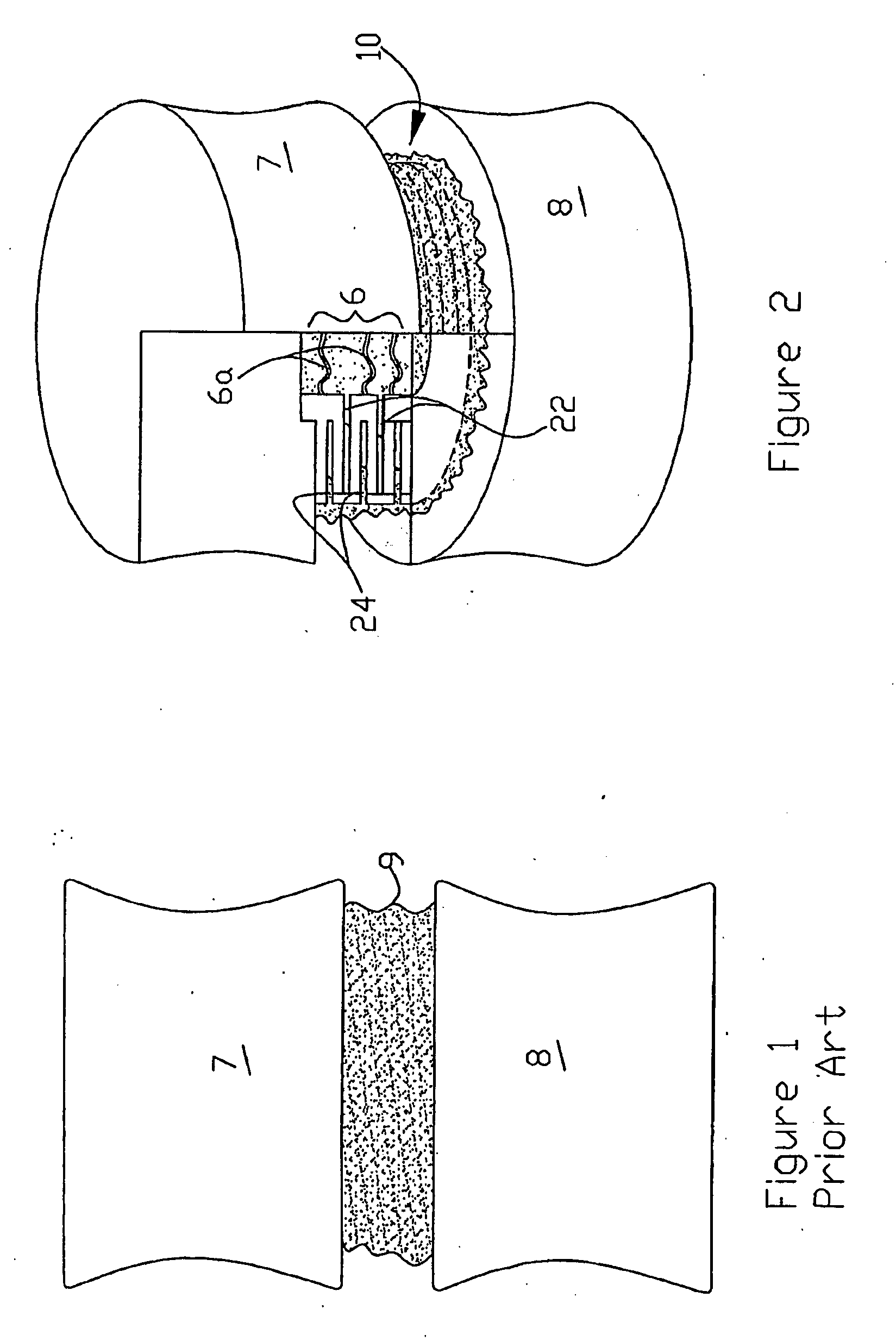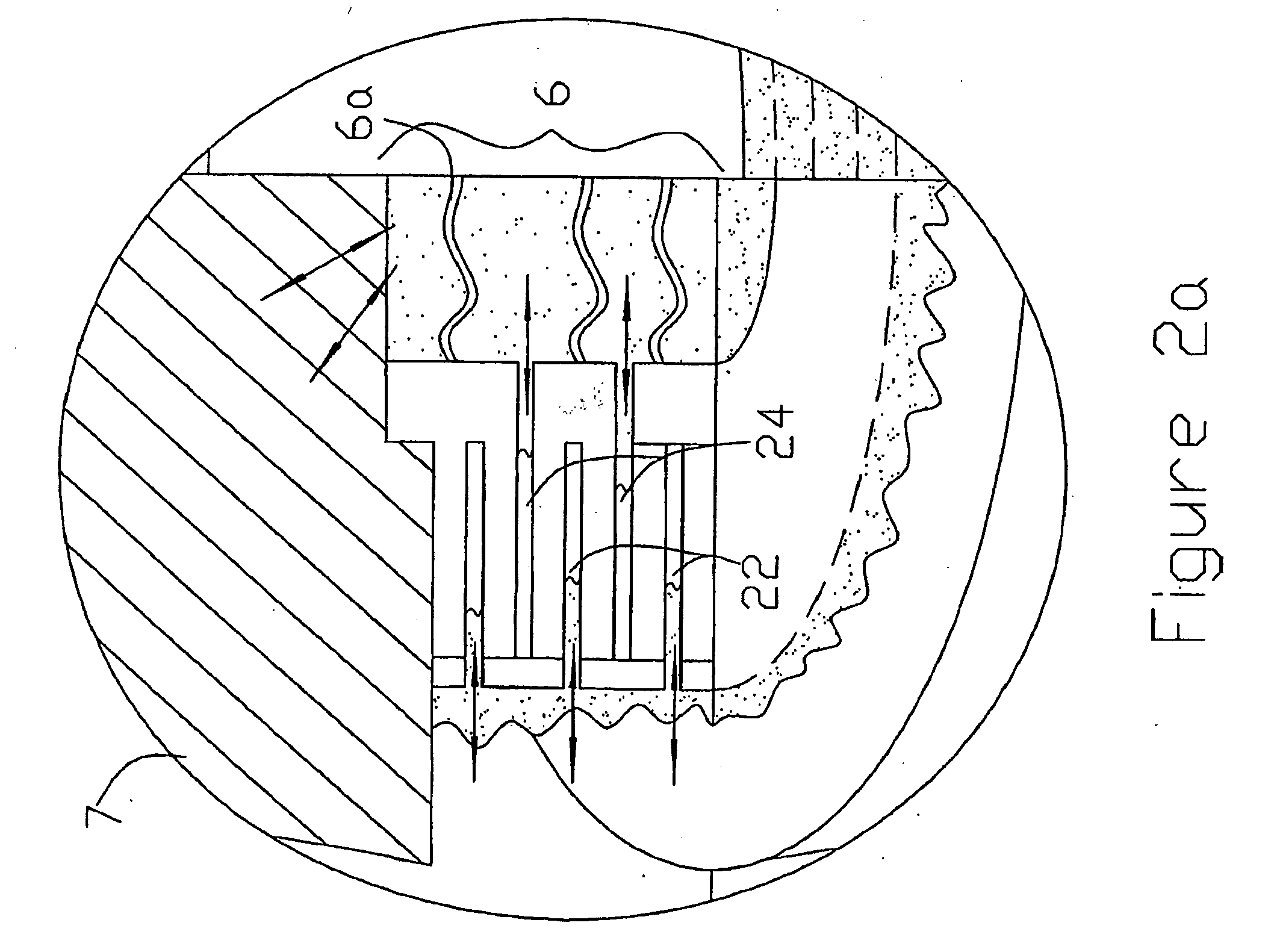Intervertebral Prosthesis for Supporting Adjacent Vertebral Bodies Enabling the Creation of Soft Fusion and Method
a technology of intervertebral discs and adjacent vertebrae, applied in the field of methods and interbody discs, can solve the problems of abnormal load on adjacent structures, not being able to be corrected or favorable for all movements, and showing some success but also failures
- Summary
- Abstract
- Description
- Claims
- Application Information
AI Technical Summary
Benefits of technology
Problems solved by technology
Method used
Image
Examples
Embodiment Construction
[0077]Referring now to FIG. 3 an upper end plate 11, providing an outer or cephalad surface 11a for buttressing against an upper vertebral body, is joined to a lower end plate 12, providing an outer or caudal surface 12a (not shown in FIG. 3). A group of interlocking interior plates or layers, collectively referred to as 13, are disposed between and joined to the inner surfaces 11b and 12b to form an anterior interbody device or artificial disc. See FIG. 11. The outer surfaces 11a and 12a of the end plates may be provided with an array of mechanical locking features such as the keels 14 or alternative geometric features and fixation rings 15a and 15b. The fixation rings may be constructed of an osteointegrative porous material which abut the edge of a hollow core or bone channel 17. As discussed previously, the core 17 accommodates bone growth to form a continuous or discontinuous strut (with nonunion locations) adjoining the separated vertebral bodies.
[0078]The fixation rings are s...
PUM
 Login to View More
Login to View More Abstract
Description
Claims
Application Information
 Login to View More
Login to View More - R&D
- Intellectual Property
- Life Sciences
- Materials
- Tech Scout
- Unparalleled Data Quality
- Higher Quality Content
- 60% Fewer Hallucinations
Browse by: Latest US Patents, China's latest patents, Technical Efficacy Thesaurus, Application Domain, Technology Topic, Popular Technical Reports.
© 2025 PatSnap. All rights reserved.Legal|Privacy policy|Modern Slavery Act Transparency Statement|Sitemap|About US| Contact US: help@patsnap.com



